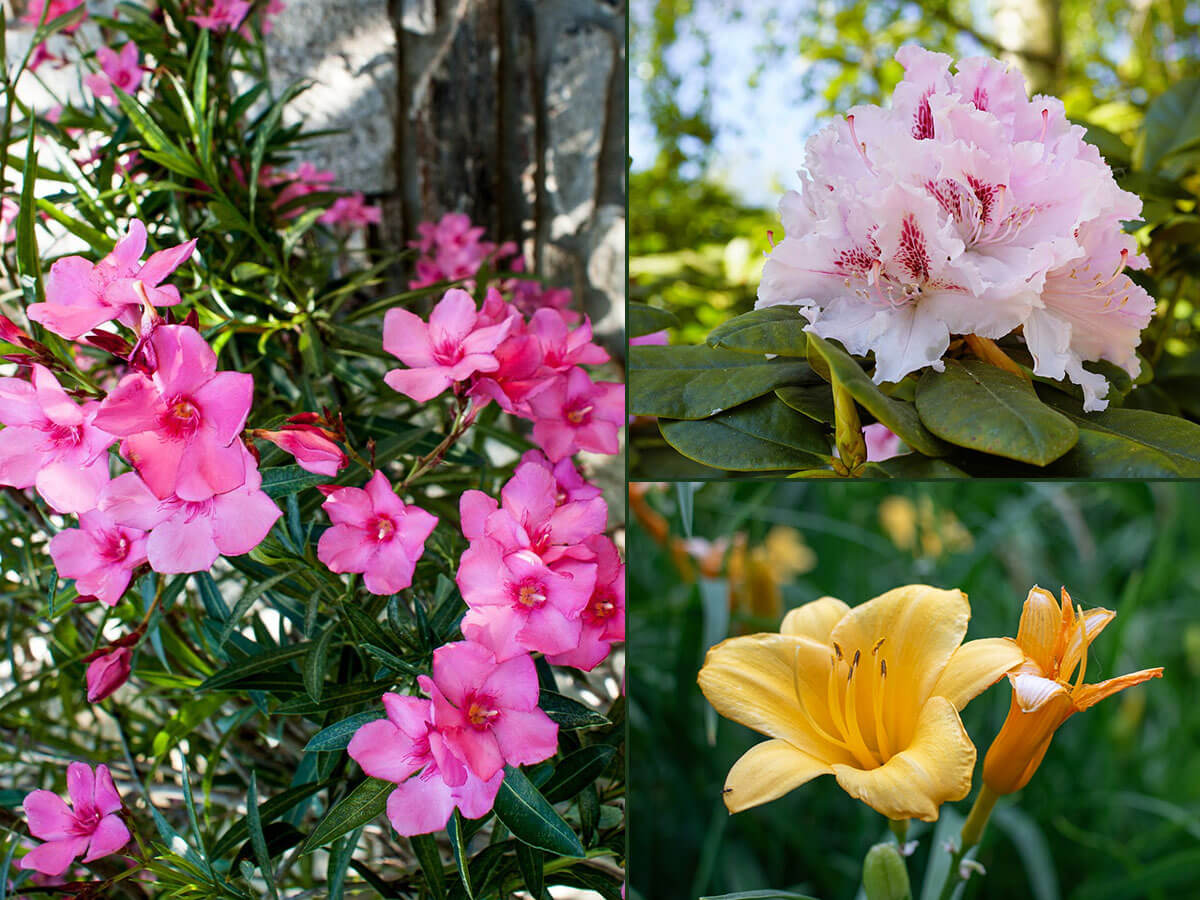10 Common Plants That Are Toxic to Cats
July, 2024 |As cat owners, we strive to create a safe and nurturing environment for our furry friends. While a beautiful garden can be a source of joy and relaxation, it’s essential to be aware of potential hazards hidden among the plants. Many common garden plants are toxic to cats and can cause serious health issues if ingested.
Related Read | How to Make Your Garden Cat Friendly: 8 Essential Tips
What Cat Owners Should Avoid Planting in Their Garden…
Cats are very curious creatures, often exploring and nibbling on plants in their surroundings. As a responsible cat owner, it’s important to be aware of the plants that can pose a risk to your furry friend.
To keep your cat safe, here are ten common toxic garden plants that you should try to avoid…
1. Lily (Lilium spp.)
Lilies are beautiful, but they are extremely toxic to cats. Ingesting even a small amount can cause severe kidney failure in an adult cat let alone a curious kitten. All parts of the plant, including the petals, leaves, and pollen, are dangerous.

2. Azalea (Rhododendron spp.)
Part of the rhododendron family, Azaleas are a popular choice for adding vibrant color to gardens, but they contain a toxic resin filled with grayanotoxins that can cause vomiting, drooling, and even heart failure in cats if ingested. It’s best to opt for another pretty flowering shrub like Camellia!

3. Daffodil (Narcissus spp.)
Daffodils are another popular spring flower that is hazardous to cats. Ingestion can lead to severe stomach upset, vomiting, diarrhea, and more serious effects like convulsions or cardiac issues.

4. Tulips (Tulipa spp.)
Tulips are toxic to cats, particularly the bulbs. If a cat eats any part of a tulip, it can suffer from symptoms like vomiting, diarrhea, and excessive drooling.

5. Oleander (Nerium oleander)
You may not know this, but oleander is one of the most toxic plants in the world — to humans too! It’s highly poisonous and can also cause serious health issues in cats. Symptoms include gastrointestinal upset and heart abnormalities. In severe cases, it will cause death.
Every plant part of oleander contains cardiac glycosides — so even if your cat nibbles on a leaf, they’ll need to go immediately to the vet.

6. Rhododendron (Rhododendron spp.)
Like azaleas, rhododendrons contain harmful grayanotoxins. Ingestion by cats can lead to vomiting, diarrhea, drooling, and severe cardiovascular issues. For bold flowers, opt for a camellia, rose bush or long-flowering echinacea!

7. Sago Palm (Cycas revoluta)
Sago palms are popular for being beautifully structural, hardy, and evergreen, however, they contain a compound called cycasin. This toxin can be extremely toxic to cats, with the seeds (nuts) being the most poisonous part. If your cat ingests sago palm it can cause severe liver failure and potentially be fatal.

8. Foxglove (Digitalis purpurea)
Foxglove is a beautiful perennial that always works well in cottage garden arrangements, but it can be incredibly deadly to cats. Like oleander, foxglove contains cardiac glycosides, which can cause heart failure. Symptoms of ingestion include vomiting, drooling, and abnormal heart rhythms.

9. Cyclamen (Cyclamen spp.)
Cyclamen plants are a popular winter-flowering plant, but they pose a risk to cats. The tubers are especially toxic and can cause severe vomiting, drooling, and even death if ingested in large quantities.

10. Chrysanthemum (Chrysanthemum spp.)
Chrysanthemums (occassionaly known as mums) contain poisonous compounds called pyrethrins that are toxic to cats. If ingested, they can cause vomiting, diarrhea, drooling, and loss of coordination.

Conclusion
If you suspect your cat has nibbled on any of these plants and they are presenting with any of the symptoms mentioned, you’ll need to take them straight to the vet.
While having a beautiful garden is enjoyable, it’s crucial to consider the safety of your pets when selecting plants. Avoiding these toxic plants will help ensure that your garden is a safe and inviting place for your feline friends.
Opt for cat-friendly plants such as catnip, cat grass, and spider plants to create a garden that’s both beautiful and safe for your furry companions.





